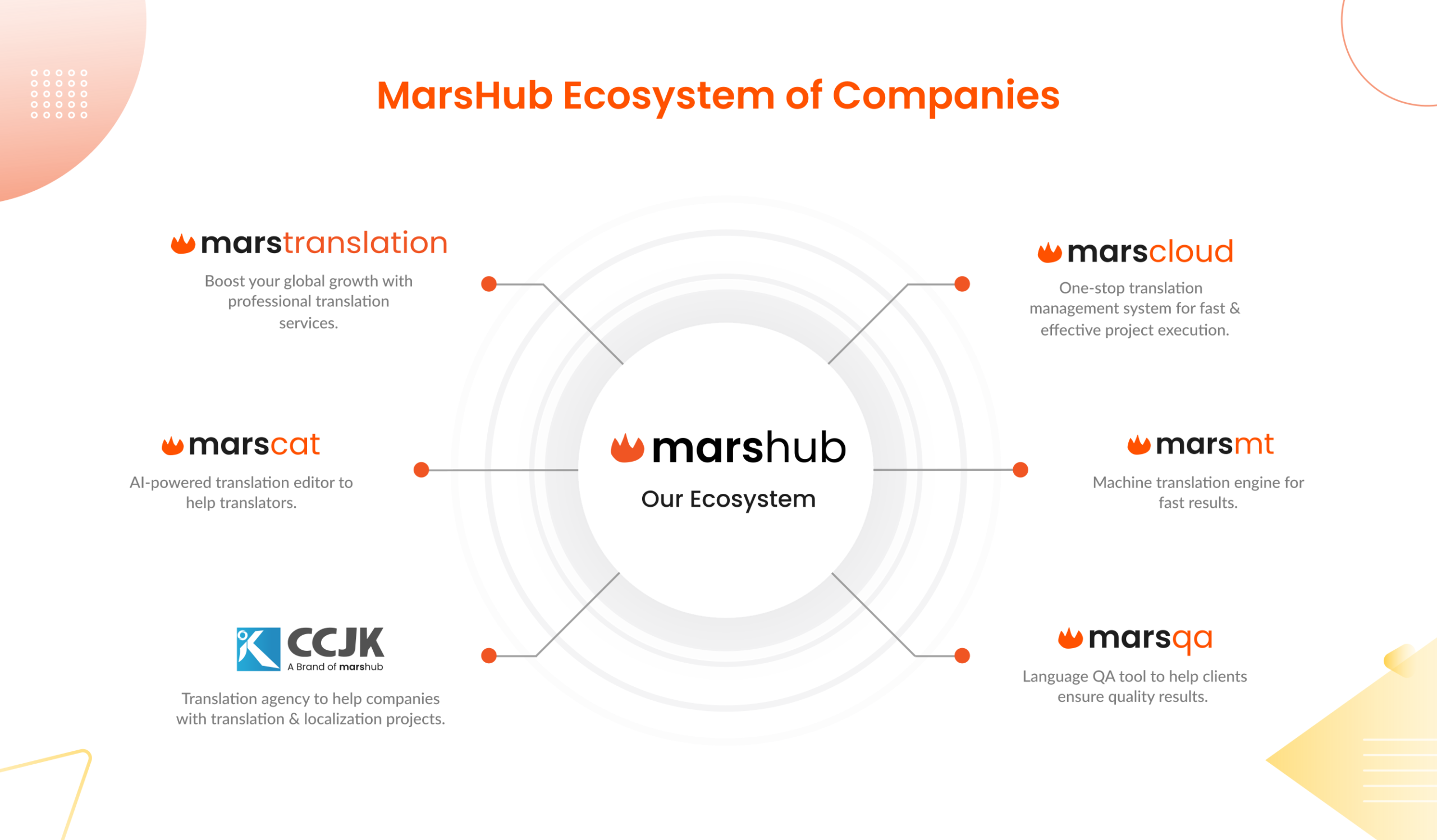The purpose of every business, regardless of the industry it is in, is to earn profit and secure a sustainable and continuous stream of return on investment. That is the basic thumb rule of the corporate vision in this prevalent era of capitalism. However, companies struggle to find an infinite stream of resources and investment. Hence, the reason a lot of businesses run out of money, within the first few years of starting. They are unable to pass the break-even point. The only way you can continue competing in this competitive market is if you have a constant stream of investments.
Thinking Globally
Similarly, in the translation industry, resources are never infinite. You have to be smart and efficient in your business decision-making. Localization has become essential for organizations that want to expand globally. You cannot survive in this competitive global environment until and unless you think globally. But that is going to take a lot of money. Hence, you need to be efficient in utilizing your resources. And also maintain a stable return on investment.
Measuring Return On Investment (ROI)
A lot of people believe that localization is an unnecessary cost. And once you step into the world of translation, it requires a continuous stream of investment, Hence, you should be very careful in calculating your return on investment vis-a-vis localization.
On the contrary, experts proclaim that this is a myopic view. Because it does not allow you to see the other side of the picture, where the costs have actually recurred via profits.
Experts say that localization and translation is economic opportunity. If you are trying to understand how that is, just look at this report from 2014.
Back in 2014, a survey was conducted by Common sense advisory. And they concluded that almost half of the US big firms, in the Fortune 500, spent over US$2 million or even more on the process of localization and translation. However, only one out of the five actually recorded and analyzed their return on investment.
Many of you reading this statement might not understand what ROI means. So let’s first discuss that,
Return on investment is actually the difference between your net profit and expenses divided by the overall costs it took for that particular investment. Keeping that in perspective, how the management can measure their ROI in the best way?
The first thing they need to do is;
Defining Your Return
The fundamental thing that will determine your rates is actually what your business aims to achieve. And what are the criteria that you have set for the success of the company?
However, if you are still not certain as to what actually ROI is, then it could be simplified by saying that it is the ratio of the overall profits to the overall expenses. Nonetheless, your strategy has a lot to do with how you put your ROI in perspective.
Strategies differ from one translation agency to another. For instance, many organizations prioritize offering their products and services to as many new customers as they possibly can. Some are very statistical in their approach. And they focus on how much time an individual spends on their particular website.
This brings to a very important notion in today’s day and age. Right now, firms are competing for information and data. And not just any data, but specialized data pertaining to customer choices and behaviors. This not only helps them to understand why consumer traffic increases or decreases on particular ads, but also enables them to make effective strategies that directly impact their Return on investments.
Companies that focus on selling products have a set priority on their return on investments. The more they sell their products, the higher their ROI will be. On the contrary, if you are specifically concerned about the leads you are generating, then your return on investment will be in accordance with the time spent on one lead.
There are a lot of factors that are in consideration here. Every regional market is different. If you are specifically localizing your offering for a particular region or particular segment, then your perimeters to judge your ROI will alter accordingly.
The buying behavior of consumers is not a universal entity. Rather it changes with the purchasing power and consumer information. You may do everything right, but due to the poor economic, political, or social conditions of the region, your ROI might derail. Hence, it’s a very complicated situation and needs to become part of your strategic planning.
Measuring The Investment
Translation is the process of converting words and phrases from one language to another. However, in localization, it’s a bit more complicated. You are actually enabling the content in accordance with the cultural and linguistic preferences and nuances of the target audience. Hence your investment increases relatively.
So here’s how it works. The expenses in the domain of translation and localization depend upon the cost per word. This will help you identify the unit of costs that will be incurred by your organization. Moreover, this will put everything in perspective. So your baseline will be set, and you can take action from there. The number of words you translate, the costs will increase or decrease relatively. In layman’s terms, this is a directly proportional relation.
Moreover, if you are taking the initiative to utilize machine translations or neural software, you might have to chip in a fixed amount to operate that. But if you view this from a strategic point of view, they are relatively easy to use. And help you save a lot of money in the long term. From today’s standard, the use of software systems has become a norm.
However, there is one aspect that can lead to high costs, and that is the coordination aspect. If you have in-house translators, you will have to be in coordination with them, and especially the development team. The design stage localization process allows linguists and the development team to work on collaboration. This endeavor eventually reduces the costs. However, if you plan to work with freelance translators, the costs may decrease, but the quality may suffer.
How to Improve Translation ROI
Businesses look for new ways to improve their ROI. Experts proclaim that the incorporation of translation tools can get the job done. Moreover, you need to spend a lot of time finding out the right language for your company.
Let’s discuss some of these steps that you can take to maximize your ROI;
1. Incorporating Translation Management Systems
The biggest advantage a machine has over humans is, that you can automate it. This allows you to achieve efficiency in every step and reduces the chances of errors. Meanwhile, your quality never gets compromised.
From a sales perspective, you do not need to rely too much on sending emails or opt for a manual search to locate the correct file. Cloud-based translation management systems can allow you to store all the data in one place. This helps you in:
- Recruiting and acquiring the best professional translators in the market.
- Without facing any massive costs, you have the ability to keep a track record of all your translation projects.
- If you are following a design stage localization strategy, translation systems will allow you to keep all the departments on the same page. This assures quality content and ensures positive customer feedback.
2. Investing in Building A Collaborative Team
One methodology that can ensure a positive ROI is to create a team with the best people. “Best” is a very subjective word, hence, may differ for everyone. In a translation agency, if your team is collaborative, it would be the best team for your organization.
A successful localization firm is able to ameliorate their translated content by enabling all the teams, mainly the development and the linguists, on a single page. This improves the overall quality of the projects.
It’s imperative for professional translators to be aware of the brand. Brand awareness will allow them to distinguish in their writing style. This aspect is essential if one wants to create a collaborative team. Moreover, the quality of the translation also increases. If you have a proper structure in place, assigning tasks to various departments also becomes easy.
3. Selecting the Appropriate Languages
If you have the proper procedures and efficient management in place, adding more languages to your services portfolio becomes facile. Moreover, your costs are also reduced. However, one should still be very heedful in allocating budgets before annexing more languages.
Translation firms that are just commencing their services, often choose to offer two to four languages. This number expands when your localization agency expands its operations. So it usually inflates from two to six languages.
A lot of the viewers reading this statement might assume that six languages are not quite enough. This may hold some truth to it. Since the internet and global connectivity have evolved, the market share of popular languages, such as English, Spanish, etc. has decreased. On the contrary, local languages and some minor languages have gained a lot of popularity. As per the statistics, shared by the Common Sense Advisory, you need to have at least 15-20 languages in your portfolio, in order to reach 80% to 90% of the people on the internet.
Conclusion
In this article, we discussed a very crucial aspect of the translation and localization business. And, i.e., is the Return on Investment.
People often assume that the more you spend on your business, the more return you will witness. This statement does not capture the entire vicinity of the localization business.
One needs to measure the return on investment by analyzing the performance return. If your investment has enabled an efficient and effective functioning of the translation processes, only then your ROI can be positive.
Therefore, in order to enable a positive ROI, focus on choosing the right languages. Meanwhile, invest in building a collaborative team that can work together to deliver high-quality translated content.



